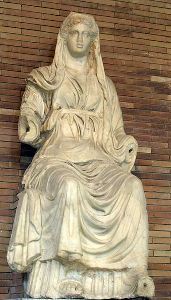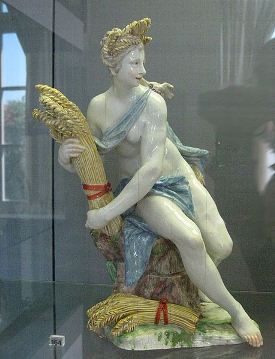Get inspiring, transformational life strategies for writers by email. Click here.
My latest book is about how writers can use mythic archetypes as guides through the challenges of the writing life. There are works that show how to use archetypes to create characters or construct plots. But my book isn’t about that. It’s about using mythic archetypes to shape your life.
I spend a lot of my time these days thinking about the thousands of deities who have been worshipped throughout history, and going over the timeless stories told about them. Lately, I’ve been thinking about the Roman goddess Ceres.

It seems odd that we don’t hear as much about Ceres as we do some other classical goddesses. Venus, for example, crops up in everything from Boticelli to a 1950’s pop tune by Frankie Avalon. But, even though Ceres was one of the principle deities of the ancient Romans, she doesn’t attract as much attention as her love-goddess sister.

Ceres was the goddess of crops, the harvest, marriage, and childbirth. She was all about fertility, growth, prosperity, and abundance. She was motherly, protective, and giving. But there was another side to this Goddess of Grain. Ceres was the goddess of thresholds.
Whenever there was an experience that moved people from one stage of life to the next or an event that threw the community into disarray, Ceres was there. When the seasons changed, altering the agricultural work that needed to be done, Ceres was worshipped. When death took loved ones away and birth brought new life into the world, Ceres was present. Ceres presided over marriages, divorces, and the initiations of children into adulthood. And when strange, unfortunate events occurred—a famine, a drought, even the birth of a two-headed cow—Ceres was called upon.
All of these events were thresholds. They brought about change in society and shifted the status quo—and they were all Ceres’s domain.
Ceres’s role was to re-establish balance. When norms were upset and life was altered, Ceres set things straight, got things back into working order, and restored balance. Scholar Barbette Stanley Spaeth, author of The Roman Goddess Ceres calls this Ceres’s “normative” role. That is, Ceres made things normal again.
Myths are always about human life. Ceres is a symbol of something we all need and must create for ourselves. She is the force that keeps us going when things go wrong. When chaos disrupts our lives, she is our ability to create a “new normal.” She’s the inner gyroscope that enables us to steady the boat and stay afloat even in the choppiest seas. When we find ourselves at thresholds, good or bad, hoped for or unexpected, our personal Ceres can empower us to step across without stumbling.
What is your inner Ceres? Can you call it up when plans are disrupted, dreams are broken, and life becomes a jumble? Inside you somewhere is the force and power to maintain your equilibrium no matter what happens. The ancient Romans personified it in Ceres. However you see it, find it, acknowledge it, and know that it will be there when you need it.
[simple_contact_form]
Thank you.
Thank you for the wisdom.
Can’t believe I didn’t notice your comment until today! You’re welcome, Carole. Glad you like the post.